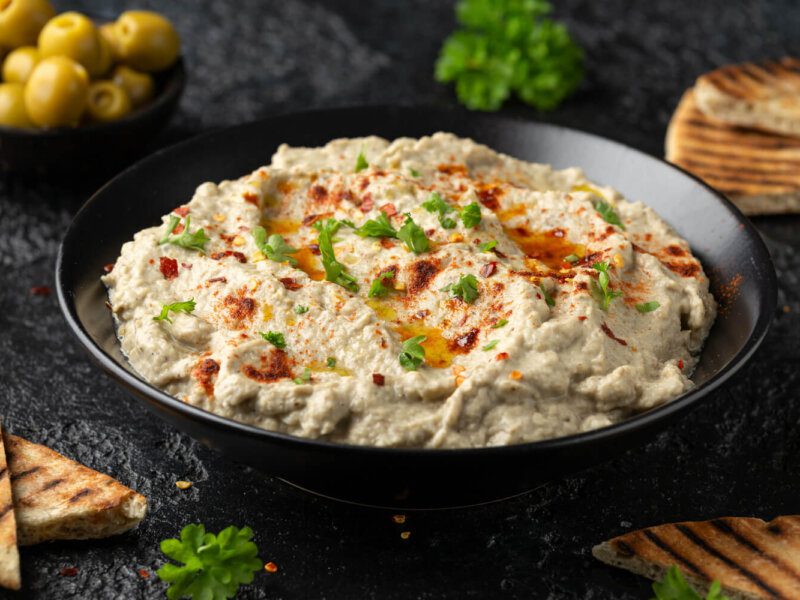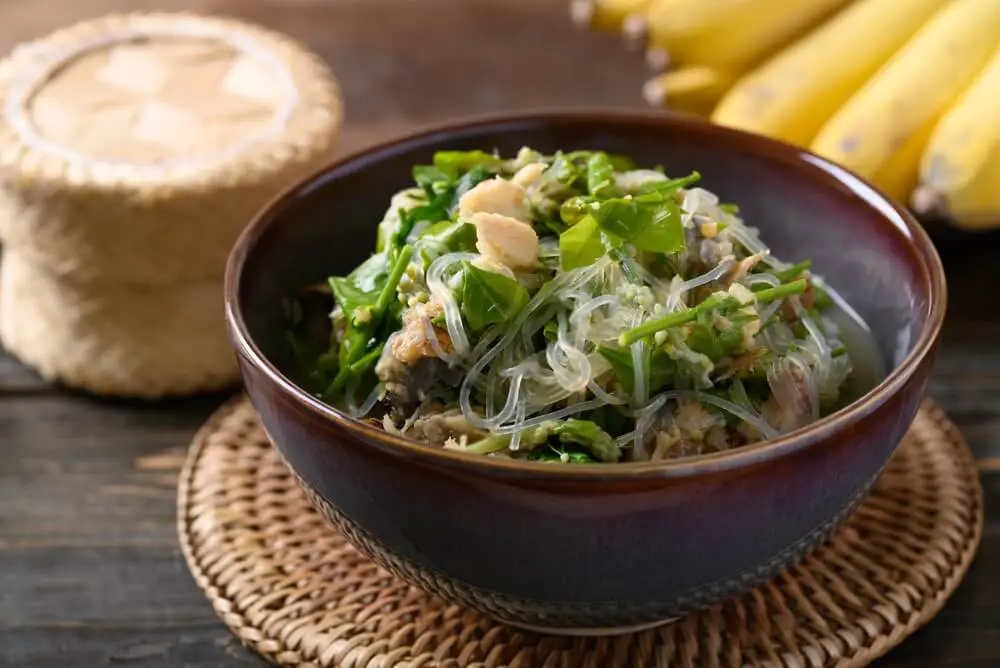You’re sitting at a cozy little Mediterranean restaurant. The waiter drops off a beautiful mezze platter, and right there in the middle—two creamy, dreamy, smoky eggplant dips staring back at you.
One’s smooth, mellow, and nutty. The other’s bright, chunky, and bursting with Mediterranean flavors. You scoop up a bite of each. Boom. Taste explosion. But wait—what’s the difference between them again? Baba ganoush? Melitzanosalata? Aren’t they kinda the same thing?
Nope. Not even close. Well, kinda close. But still different enough to spark a Baba Ganoush Vs. Melitzanosalata debate that deserves some real attention.
So, if you’ve ever found yourself in the middle of a mezze platter mix-up, don’t worry—I got you. We’re about to break it all down. Ingredients. Texture. Preparation. And, of course, the all-important taste test. By the time we’re done, you’ll never confuse these two delicious dips again. Let’s go.
What is Baba Ganoush?
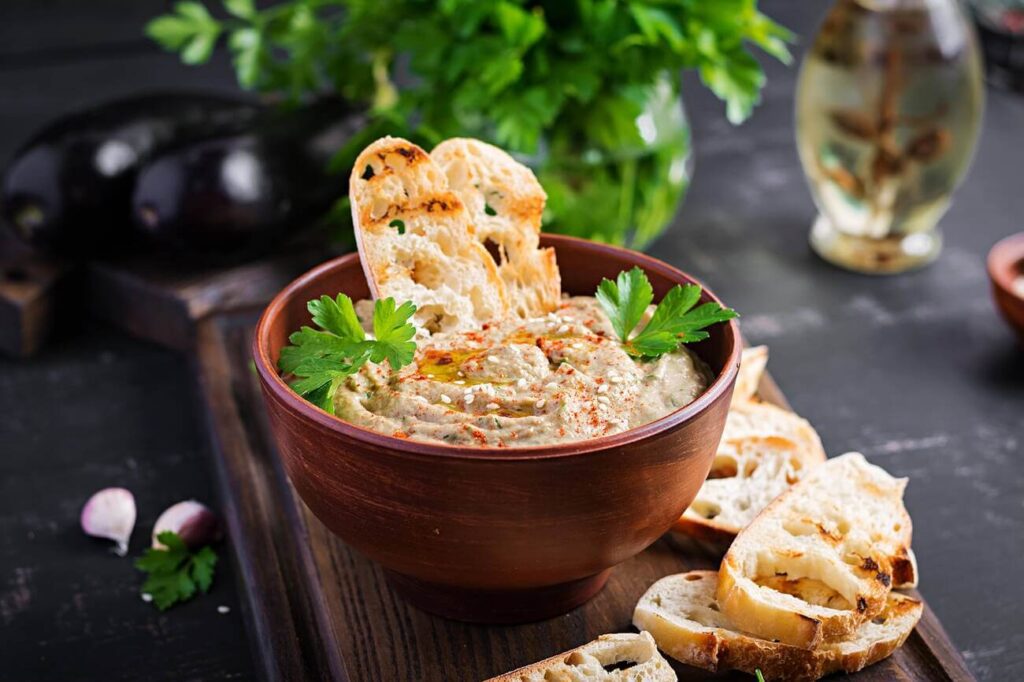
First up, baba ganoush. This creamy, smoky goodness hails from the Middle East—think Lebanon, Syria, Palestine. It’s a staple in Mediterranean cuisine and honestly? It’s kinda addictive.
The secret to great baba ganoush? Tahini. That’s right. This dip leans on the nutty, sesame-based paste to give it that ultra-smooth, velvety texture. And let’s not forget the other MVPs:
- Roasted eggplant (duh)
- Garlic
- Lemon juice
- Olive oil
- A little salt
- Maybe some cumin or paprika if you’re feeling fancy
But let’s talk about how it’s made, because that’s where the magic happens. You gotta roast that eggplant until the skin is charred and the inside is basically melting. Some people grill it over an open flame. Some throw it in the oven. Either way, that smoky flavor is non-negotiable. Once it’s all soft and luscious, you scoop out the insides, mash it up (or blend if you like it extra smooth), mix in the rest of the ingredients, and boom. You got yourself a dip.
Baba ganoush is silky, smoky, and just a little nutty from the tahini. Perfect for scooping up with warm pita bread. Or honestly? Just eat it with a spoon. No judgment.
What is Melitzanosalata?

Now let’s hop over to Greece, where melitzanosalata takes the stage. First things first—if you’re wondering how to pronounce melitzanosalata, here’s your guide: meh-lee-tsah-no-sah-LAH-tah. Say it five times fast. I dare you.
The name literally translates to “eggplant salad,” and that right there tells you a lot about what makes it different from baba ganoush. Instead of being creamy and blended smooth, melitzanosalata is chunky, tangy, and full of bold flavors. No tahini here. Instead, you get:
- Roasted eggplant
- Olive oil (lots of it)
- Red wine vinegar (for that tangy kick)
- Garlic
- Fresh herbs like parsley and oregano
- Maybe some feta cheese or kalamata olives if you wanna get fancy
Unlike baba ganoush, which is all about smoothness, melitzanosalata is rustic. You mash the eggplant with a fork instead of blending it, so it’s got this chunky, textured vibe. The flavors are bright, punchy, and unmistakably Greek. And that hit of red wine vinegar? Total game-changer.
Pair it with grilled meats. Slather it on a slice of crusty bread. Dunk in some veggies. It’s bold enough to stand on its own but also plays nice with other mezze favorites like tzatziki or tirokafteri (which, by the way, is another amazing Greek dip made with spicy feta and red peppers—just saying).
Baba Ganoush Vs. Melitzanosalata: Comparing the Dips
Alright, time for the showdown. Let’s break it down.
Ingredients
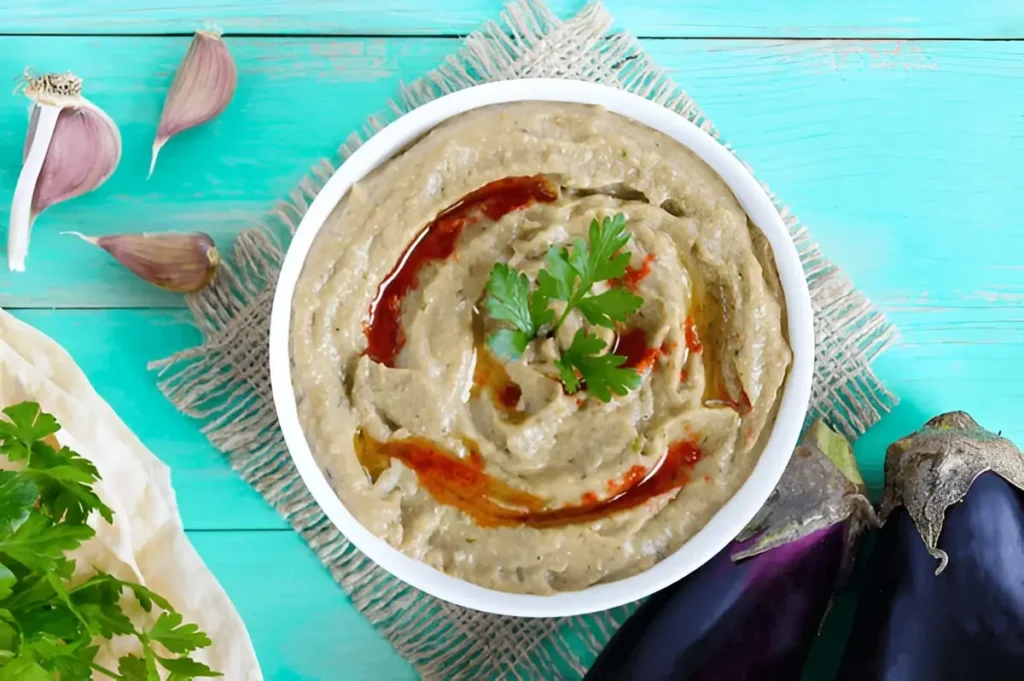
Baba Ganoush is made with roasted eggplant, tahini, lemon juice, garlic, olive oil, and spices. It’s creamy and rich, thanks to the tahini, with a deep, smoky flavor.
Melitzanosalata, on the other hand, skips the tahini and goes for a more tangy and herby approach. It’s made with roasted eggplant, olive oil, red wine vinegar, garlic, and fresh herbs. Sometimes, it even includes feta or olives for an extra Greek twist.
Texture
Baba Ganoush is smooth and velvety, usually blended or mashed to a creamy consistency. Melitzanosalata is chunkier, mashed by hand for a more rustic, salad-like texture.
Flavors
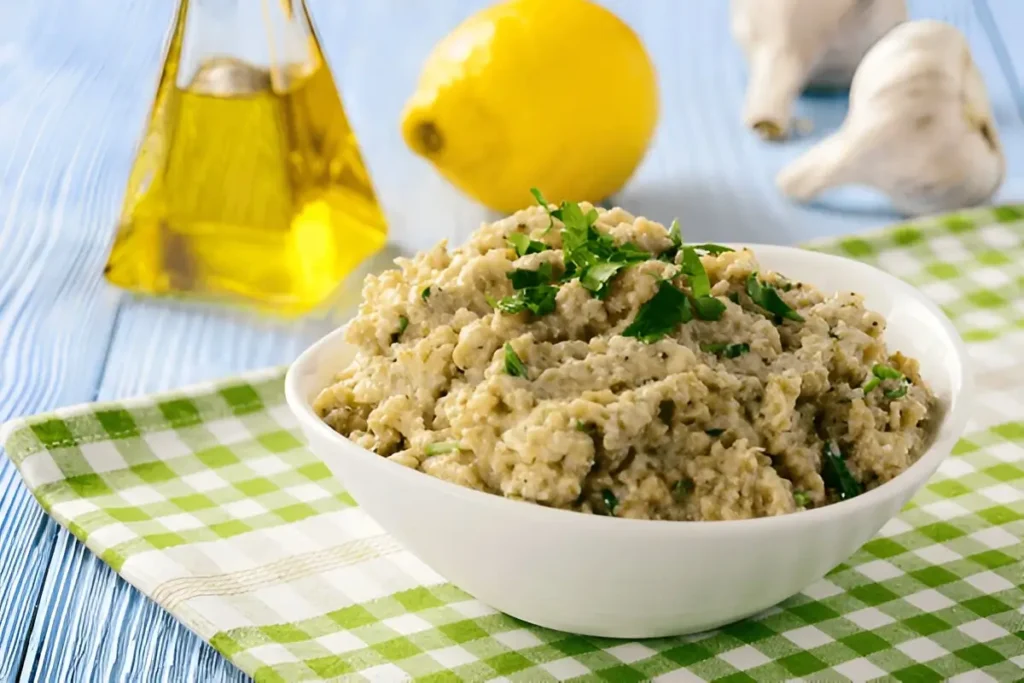
Baba Ganoush leans smoky, nutty, and mellow. Melitzanosalata? It’s tangy, herby, and bold, with a fresh Mediterranean punch.
Preparation
Baba Ganoush is all about that smooth, creamy consistency—whether you blend it or mash it up, it’s meant to be silky. Melitzanosalata, on the other hand, embraces its rustic charm, keeping things chunky and textured with that hand-mashed, fork-squashed goodness.
Recipes to Try at Home
Wanna make these dips yourself? Here’s how.
Easy Baba Ganoush Recipe
- Roast 2 medium eggplants over an open flame (or in the oven at 400°F until soft and charred)
- Let cool, then scoop out the flesh
- Blend with ¼ cup tahini, 2 tbsp lemon juice, 2 tbsp olive oil, 1 clove garlic, salt, and a pinch of cumin
- Serve with pita and veggies
Authentic Melitzanosalata Recipe
Serve with crusty bread
Roast 2 medium eggplants until charred and soft
Peel and mash with a fork
Stir in 3 tbsp olive oil, 2 tbsp red wine vinegar, 1 clove minced garlic, 2 tbsp chopped parsley, salt, and crumbled feta if desired
FAQs: Baba Ganoush Vs. Melitzanosalata
Can I use canned or pre-roasted eggplant?
Yes, but fresh is best! While canned or pre-roasted eggplant can save time, roasting your own gives the dip a deeper, smokier flavor that takes it to the next level. If you’re in a pinch, just be aware the texture and taste might be slightly different.
Can I swap out ingredients?
You can tweak the recipes to your liking, but some core ingredients define each dip. Baba ganoush needs tahini for its signature nutty smoothness, while melitzanosalata thrives on olive oil and vinegar for its tangy punch. Small tweaks? Totally fine. But swapping out tahini or vinegar? That changes the game.
How long do these dips last?
Stored in an airtight container, both dips stay fresh in the fridge for 3–4 days. Want to keep them longer? You can freeze them for up to 3 months, though the texture may change slightly after thawing.
What else can I serve them with?
Pita bread and veggies are classic, but don’t stop there! Try pairing these dips with:
- Crunchy crackers (wheat, multigrain, or even potato chips)
- As a bruschetta topping
- A dip for baked or fried falafel
- Spread on sandwiches or wraps for a Mediterranean twist
Can I adjust the serving size?
Absolutely! You can easily double or halve the recipes while keeping the same ingredient ratios. Just be mindful when adding seasonings—start with less and adjust to taste.
Are these dips good for any diet?
Yes! Both are naturally plant-based and fit into many diets with slight tweaks:
- Keto/Paleo? Swap tahini for extra olive oil in baba ganoush.
- Dairy-free? Skip the feta in melitzanosalata.
- Low-carb? Enjoy with cucumber slices instead of pita.
Can I make them ahead of time?
Definitely! Both dips taste even better after a day or two as the flavors meld. Just store them covered in the fridge and bring them to room temperature before serving for the best taste.
Do I need to peel the eggplants?
- For melitzanosalata, no need to peel—keeping some roasted skin adds depth.
- For baba ganoush, yes! Peeling off the charred skin gives it a smoother, creamier consistency.
How can I spice things up?
Love a little heat? Try adding ¼ teaspoon of cumin, coriander, smoked paprika, or red pepper flakes to either dip. Just add a little at a time and taste as you go!
What’s the nutrition profile?
Both dips are low-calorie, high in antioxidants, and packed with fiber thanks to the eggplant base. Here’s a quick breakdown (per 2 tbsp):
- Baba Ganoush: ~15 calories, rich in healthy fats from tahini
- Melitzanosalata: ~20 calories, higher in heart-healthy olive oil
Do they taste the same cold or at room temperature?
Nope! These dips taste best at room temperature—straight from the fridge, the flavors can be muted. Let them sit out for 15–20 minutes before serving for maximum flavor.
Any tips for the perfect texture?
Melitzanosalata – Keep it rustic! Mash with a fork or potato masher for that chunky, homemade feel. Avoid over-processing, or you’ll lose that classic Greek-style texture.
Baba Ganoush – Use a food processor for a super creamy dip, or mash by hand for a bit more texture.
Conclusion
Honestly? You can’t go wrong. If you’re in the mood for something creamy and smooth, baba ganoush is your go-to. If you want something bold, tangy, and textured, melitzanosalata is where it’s at.
Both of these aubergine mezze dips are packed with Mediterranean goodness, and they each bring something different to the table. So next time you see them on a menu, you’ll know exactly what’s up. No more mix-ups. Just pure, eggplant-y deliciousness.
Now, the real question is—are you team Baba Ganoush or team Melitzanosalata? Let me know.
